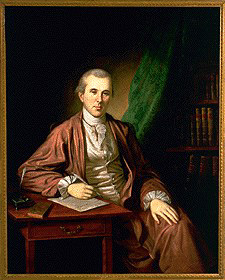|
The association with European scientists was not
just symbolic. Soon after the Revolutionary War, Rush, a signer of the Declaration of Independence, wrote to a professor at Edinburgh that “the members of the republic of science all belong to the same family. What has physic [medicine] to do with taxation or independence?”
Franklin, too, believed that
science transcended conflicts between nations. During the war
he issued a “passport” for Captain Cook, the British
explorer, who had set out on a voyage before the war began. He addressed a letter to all American ships,
recommending that Cook’s ship not be seized, for “the increase of geographical knowledge facilitates the
communication between distant nations . . . whereby
the common enjoyments of human life are multiplied and augmented, and science of other kinds increased
to the benefit of mankind in general.”
The “republic” also transcended class lines. The
social backgrounds of American men of science ranged from the Boston Puritan establishment and the Southern planter aristocracy to that of Franklin himself.
|
|

Benjamin Rush was interested in earthquakes as a medical as well as a geological subject. He examined a geological subject. He examined them as a possible cause of disease.
Benjamin Rush, by Charles Willson Peale, 1783 and 1786. Winterthur Museum; gift of Mrs. Julia B. Henry, 1959.
|



